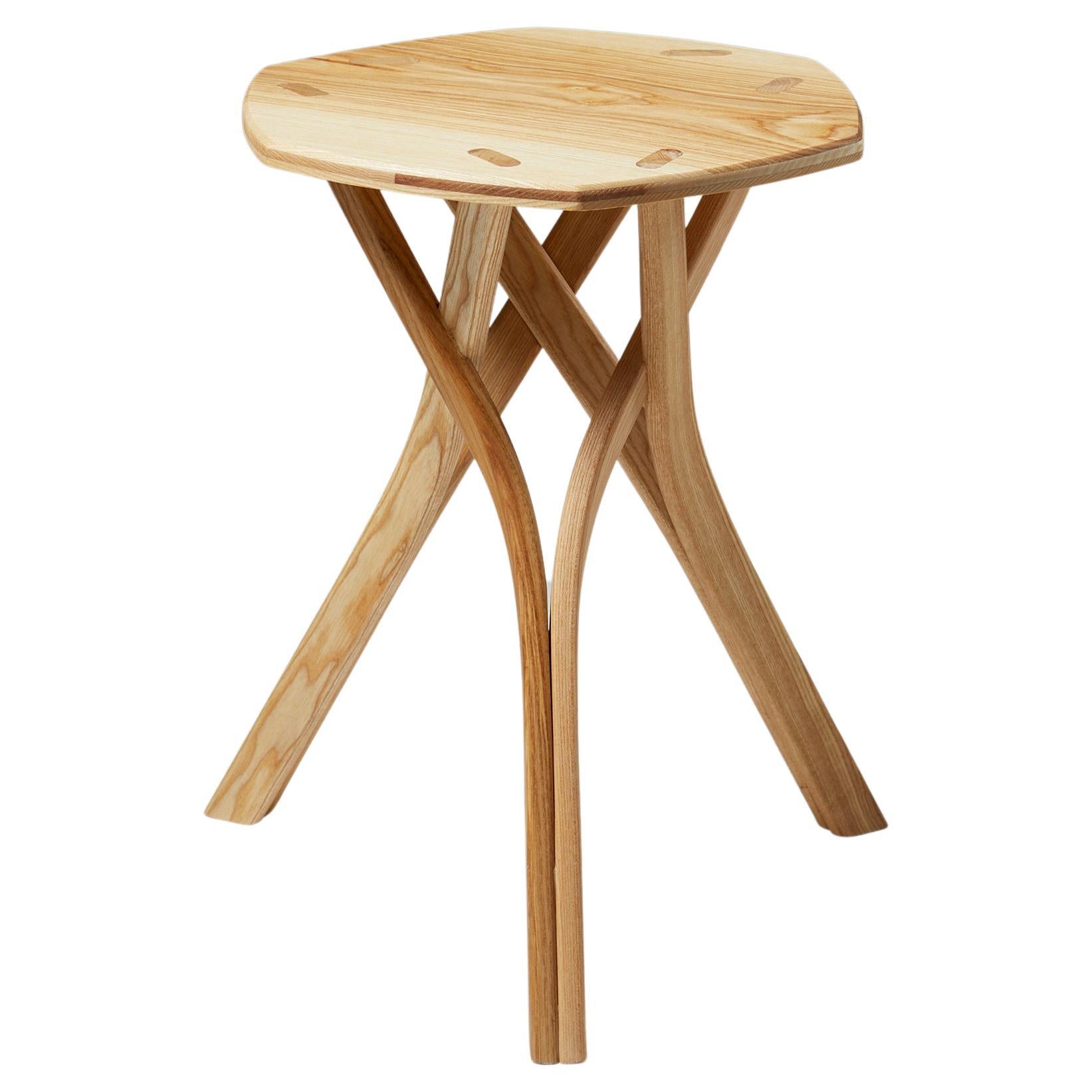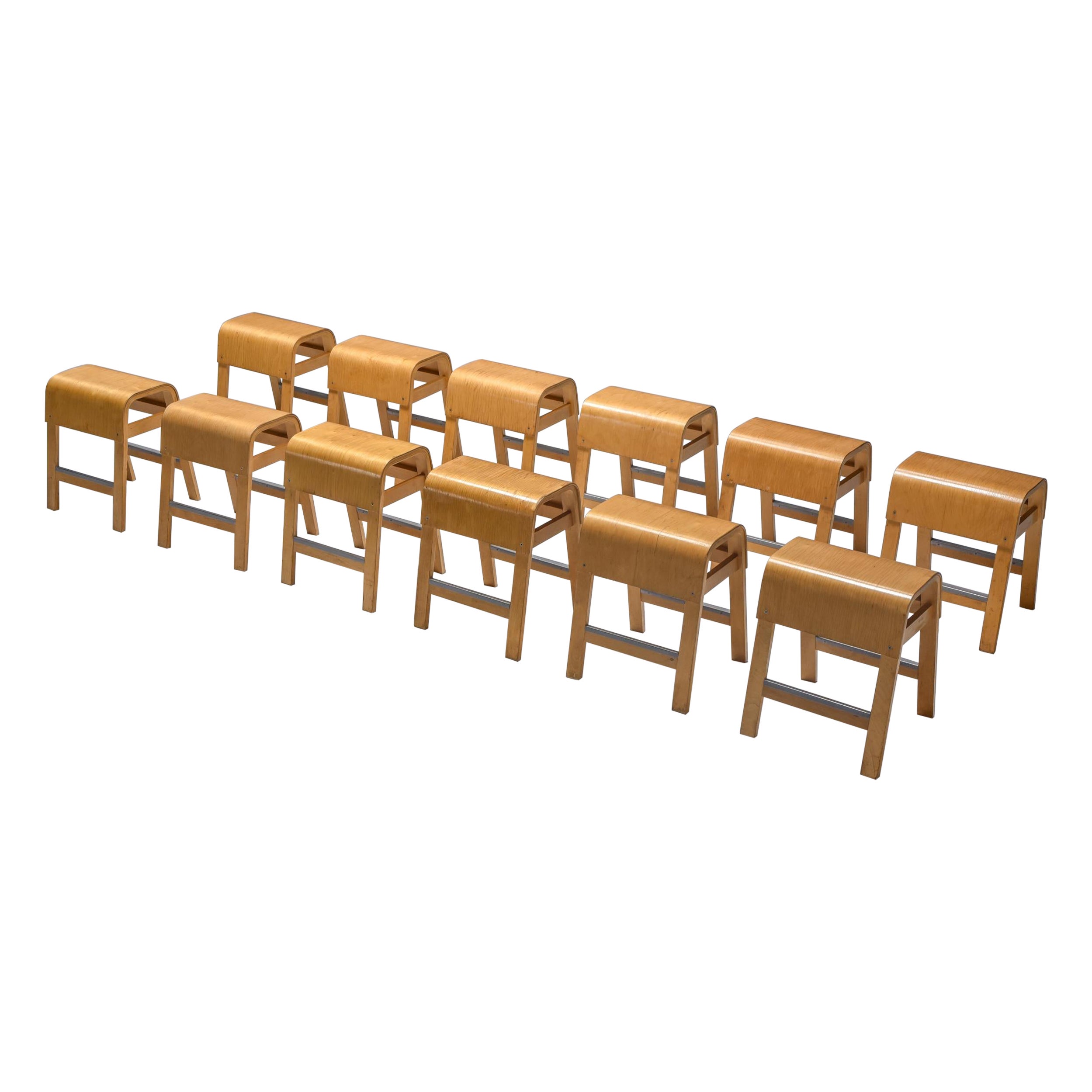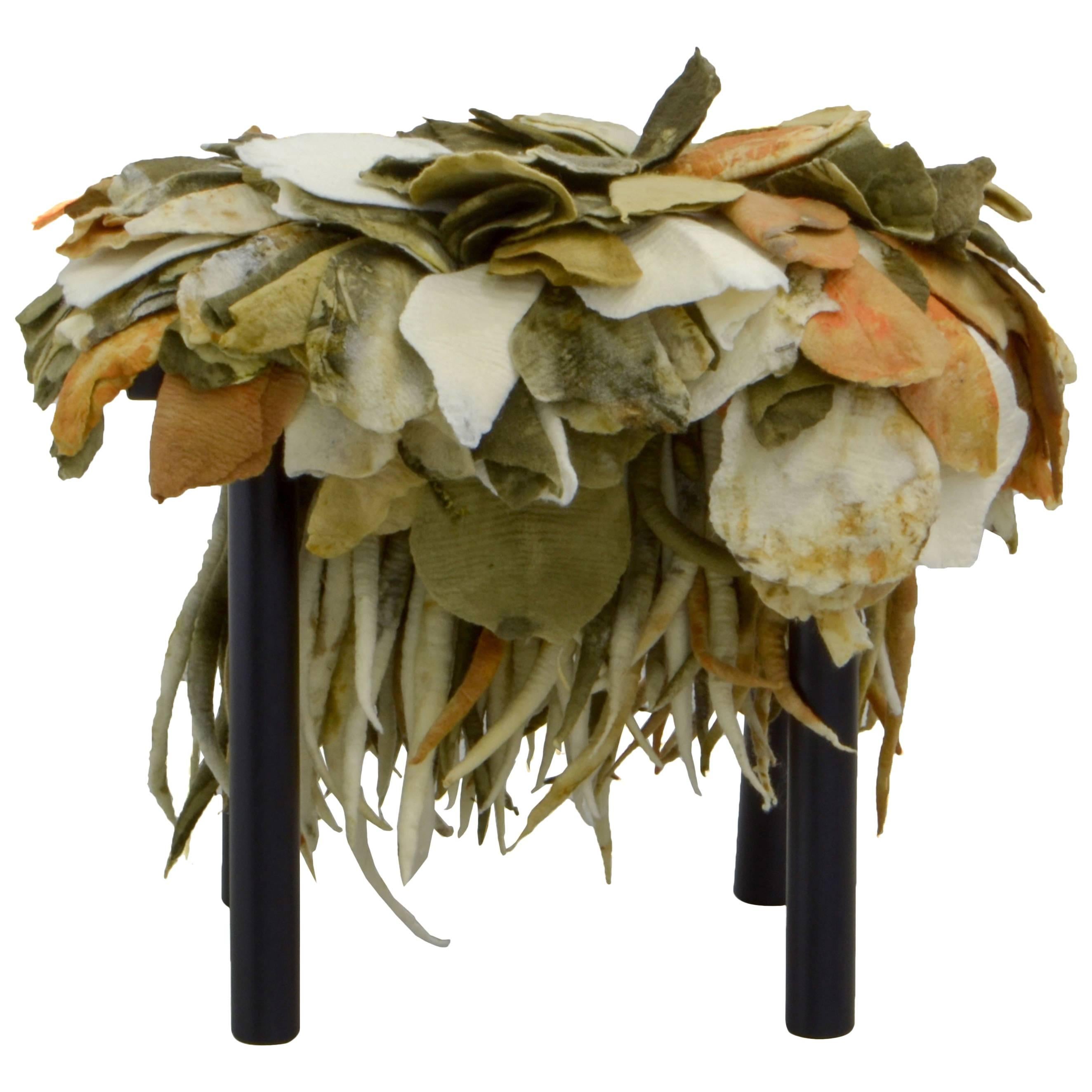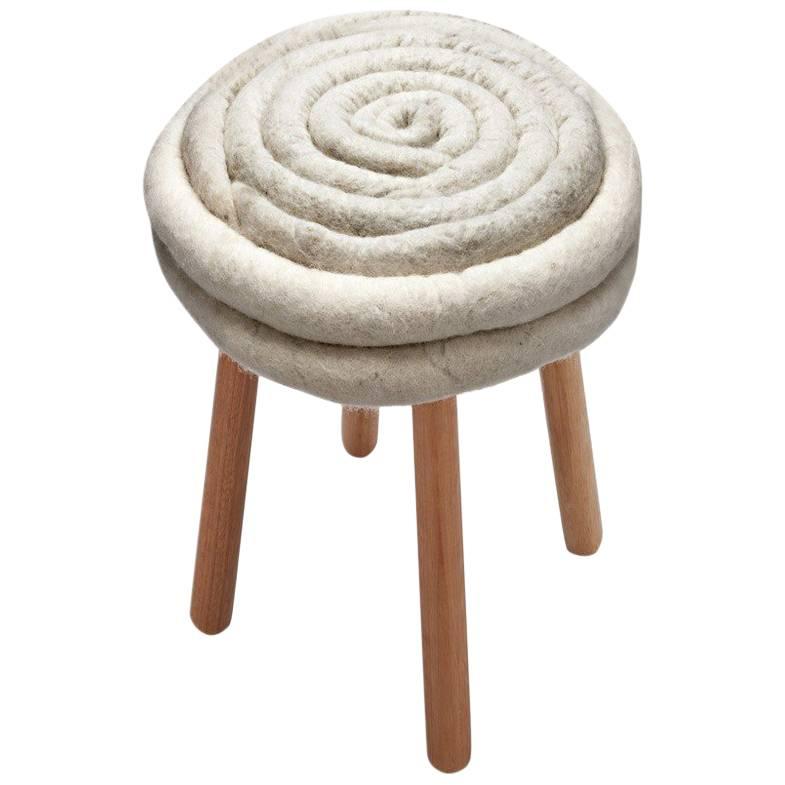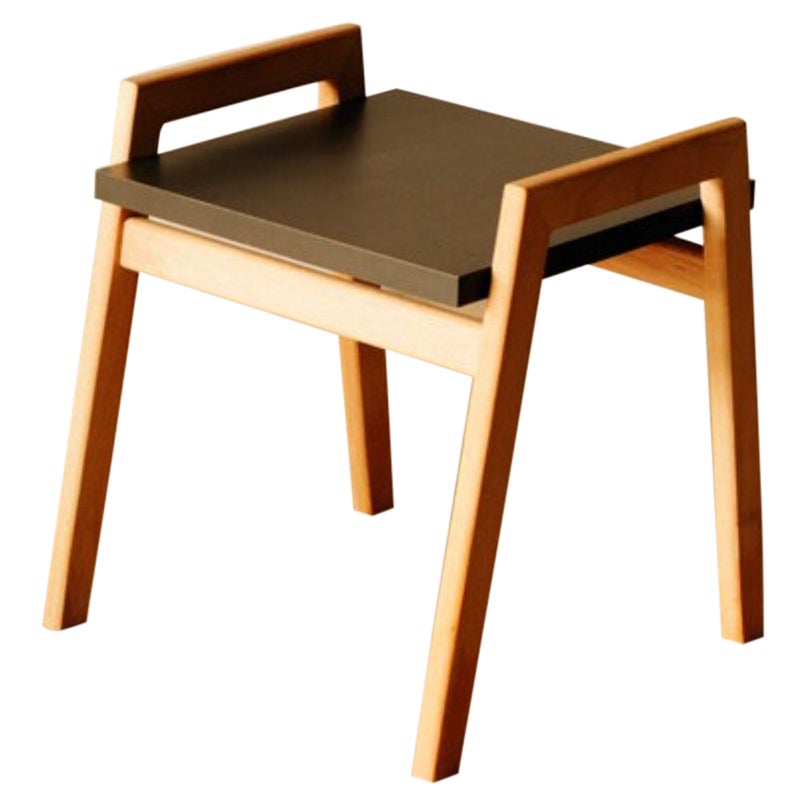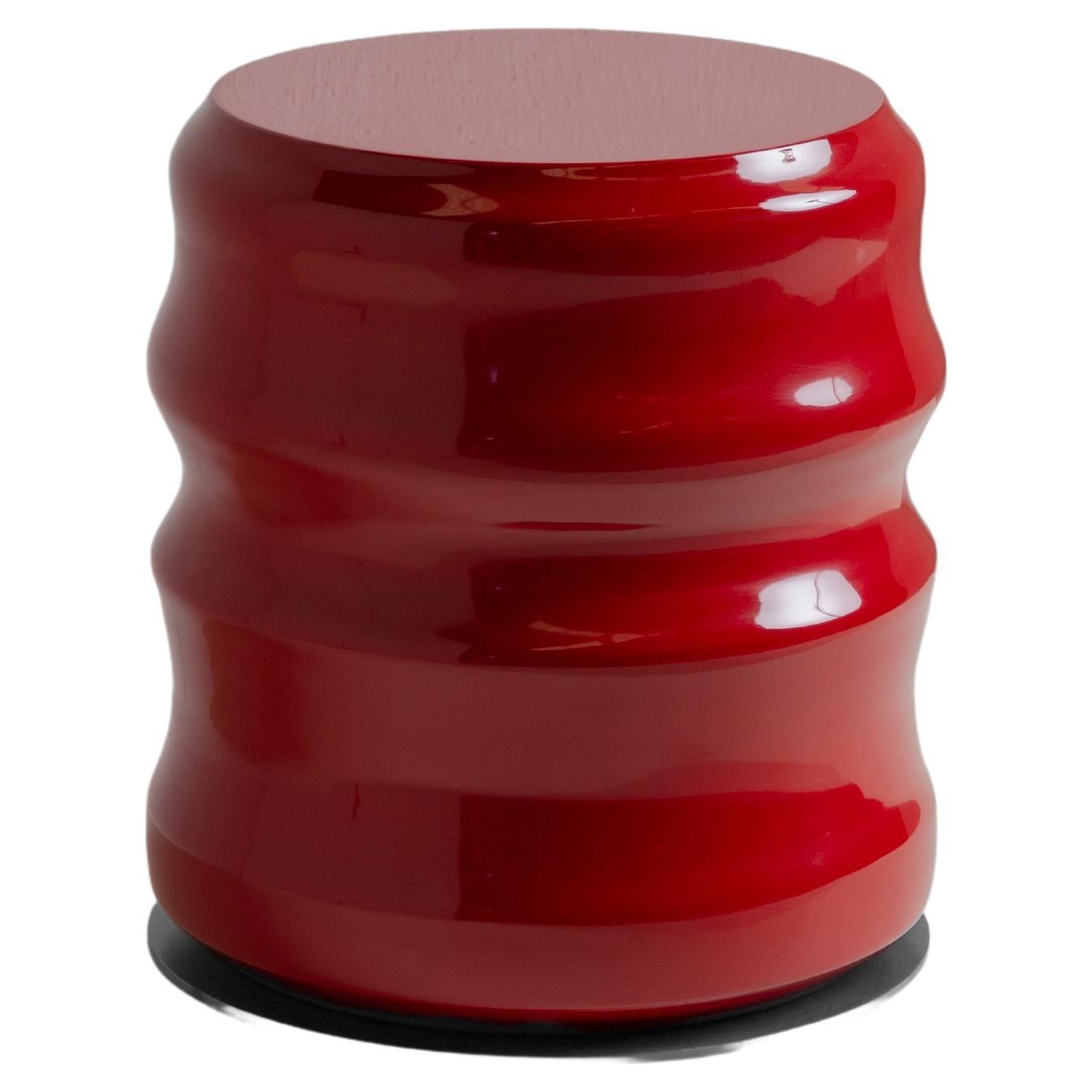Items Similar to Stool Designed by Calle Warfvinge, Sweden, Contemporary
Want more images or videos?
Request additional images or videos from the seller
1 of 9
Stool Designed by Calle Warfvinge, Sweden, Contemporary
About the Item
Stool designed by Calle Warfvinge,
Sweden. Contemporary.
Ash.
Unique.
This contemporary Swedish stool is a work of unparalleled craftsmanship. Calle Warfvinge carefully chose the individual wooden components to achieve a decorative effect. The overlapping, intertwined legs are carved from solid ash wood with through tenon joints that create a decorative pattern on the surface of the seat. The piece is both beautiful and sturdy.
Calle Warfvinge is from Skåne, the southernmost county of Sweden, and his love for nature pervades all his designs. Initially a boat builder, he now mainly produces wooden furniture that stands out because of its exceptional quality. Warfvinge uses only the finest quality of wood that grows in the forests where he lives.
Dimensions:
H: 54 cm / 1' 9 1/2"
Diameter: 47cm / 1' 6 1/2"
- Dimensions:Height: 18.31 in (46.5 cm)Diameter: 14.18 in (36 cm)Seat Height: 18.31 in (46.5 cm)
- Style:Mid-Century Modern (Of the Period)
- Materials and Techniques:
- Place of Origin:
- Period:
- Date of Manufacture:2022
- Condition:
- Seller Location:Stockholm, SE
- Reference Number:1stDibs: LU1006628120512
About the Seller
5.0
Recognized Seller
These prestigious sellers are industry leaders and represent the highest echelon for item quality and design.
Gold Seller
These expertly vetted sellers are highly rated and consistently exceed customer expectations.
Established in 1998
1stDibs seller since 2013
184 sales on 1stDibs
Typical response time: 1 hour
- ShippingRetrieving quote...Ships From: Stockholm, Sweden
- Return PolicyA return for this item may be initiated within 2 days of delivery.
More From This SellerView All
- Stool Designed by Calle Warfvinge, Sweden, ContemporaryLocated in Stockholm, SEStool designed by Calle Warfvinge, Sweden. Contemporary. Ash. Unique. Engraved ‘CW’. This contemporary Swedish stool is a work of unparalleled craftsmanship. Calle Warfvinge ca...Category
21st Century and Contemporary Swedish Mid-Century Modern Stools
MaterialsAsh
- Stool Designed by Stig Lönngren, Sweden, 1947By Stig Lönngren 1Located in Stockholm, SEStool designed by Stig Lönngren, Sweden, 1947. Teak and leather. Stig Lönngren (1924-2022) received his carpentry qualifications in 1946. He went on to...Category
Mid-20th Century Swedish Mid-Century Modern Stools
MaterialsLeather, Teak
- Stool Designed by Ingvar Kamprad for Habitat, Sweden, 2004By Ingvar KampradLocated in Stockholm, SEStool designed by Ingvar Kamprad for Habitat, Sweden. 2004. Lacquered pine. Stamped. Measurements: H: 36 cm / 1' 2" Diameter: 32 cm / 1' 1/2".Category
Mid-20th Century Swedish Mid-Century Modern Stools
MaterialsPine
- Stool Designed by Ingvar Hildingsson for I.H. Slöjd, Sweden, 1970sBy Ingvar HildingssonLocated in Stockholm, SEStool designed by Ingvar Hildingsson for I.H. Slöjd, Sweden, 1970s. Birch. Marked: IH Dimensions: H: 36 cm/ 14" D: 30 cm/ 11 3/4"Category
Vintage 1970s Swedish Mid-Century Modern Stools
MaterialsBirch
- Stool Designed by Uno and Östen Kristiansson for Vittsö, Sweden, 1960sBy Uno KristianssonLocated in Stockholm, SEStool designed by Uno and Östen Kristiansson for Vittsö, Sweden, 1960s. Teak and leather. H: 40 cm W: 42 cm D: 42 cm.Category
Vintage 1960s Swedish Mid-Century Modern Stools
MaterialsLeather, Teak
- Stool Model 927 Designed by Josef Frank for Svenskt Tenn, Sweden, 1950sBy Josef FrankLocated in Stockholm, SEStool model 927 designed by Josef Frank for Svenskt Tenn, Sweden, 1950s. Mahogany and rattan. Measures: H: 43 cm W: 43 cm D: 28 cm Josef Frank was a true European, he was also a pioneer of what would become classic 20th century Swedish design and the “Scandinavian Design Style”. Austrian- born Frank started his design career as an architect after having trained at the Technische Hochschule in Vienna between 1903 and 1910. After his training he went on to teach at Kunstgewerbeschule (The Viennese School of Arts and crafts) where he developed and espoused the new school of modernist thinking towards Architecture and Design that was coming to fruition in Vienna at the time. He also went on to lead the Vienna Werkbund throughout the 1920s. This was a truly progressive group of Architects and Designers who set about improving the daily lives of Austrian people through modernist design and architecture in partnership with Arts and Crafts ideals and construction. Frank’s leadership of the Werkbund had already cemented his place at the forefront of European design. Frank’s time in Vienna was typified by his design for the “Die Wohnung” exhibition of the Deutscher Werkbund in Stuttgart, 1927 where he exhibited along side his contemporaries at the forefront of design, such as the likes of Le Corbusier and Walter Gropius. Here he showed a specially designed pair of flat-roofed reinforced concrete houses in what is now seen as a typical modernist style. What separated Frank’s house from the other 32 houses of the exhibition was the interior and furniture inside the building. It was described as “Neo-Classical” and filled with an eclectic mix of period pieces, modern design and pieces designed by Frank himself that seemed to cross the two worlds. This was a complete opposite direction to that which his fellow Architects were travelling in with their pared back and angular aesthetics. Frank said of his own work: “The house is not a work of art, simply a place where one lives,” and by this reasoning Frank rejected the regimental mechanisation of the living space that his contemporaries believed in, instead he set about creating congenial and spontaneous interiors. Frank’s practice saw him placing the bright colours and the soft forms of nature back into the furnishings and interiors that he thought modernism sorely mist. Frank, along with Oskar Walch set up Haus und Garten in Vienna in 1925. This was Frank’s first commercial foray into furniture and home furnishings and the company went on to become the most influential furnishing house in Vienna with a riotous depth of colour and interesting shapes becoming the trademark of their design. However this success was to come to an end with rise of Nazism in Vienna in the early 1930’s. Frank was Jewish, and he and his wife Anna decided they would leave Vienna for her motherland: Sweden, in 1933. Frank continued to design for Haus and Garten, visiting Vienna occasionally and designing the pieces that would continue to be the company’s best sellers long after Frank was forced to hand the company over in 1938 after the Third Reich annexation of Austria. When Josef and Anna had moved to Sweden Frank had struck up a working relationship with Design shop owner Estrid Ericson. Ericson was the proprietor of Svenskt Tenn that at this point was a successful interiors shop in Stockholm with the royal warrant of appointment to the Swedish Royal Household. In 1935 Frank had become the chief designer for Svenskt Tenn and had set about putting all of his creative effort into his designs for the company. At the World Expositions in Paris in 1937 and New York in 1939 the world saw for the first time the wealth of products that Frank had been working on, ranging from candlesticks to cabinets, there was not a domestic object that Frank had not subjected to his colourful, comfortable and organic style of Modernism. Frank’s new school of Modernism championed ideas such as chairs having a freeing, open back and that “If one desires the room to be comfortable…all pieces of furniture should allow for a free view of the separating line between the floor and the wall. A cabinet without legs breaks this line and thus reduces the feeling of space.” A world-wide audience tired of classic Modernism’s furniture with solid planes and aggressive forms leapt upon these ideas and Franks natural and bright designs for Svenskt Tenn became internationally desired. Frank created over 2000 designs for Svenskt Tenn and his products continue to be the core of their brand. Frank’s rejections of tubular metal and heavy lacquers within his furniture have insured his unique light form of Modernism continues to influence and flourish today. His natural toned mahogany and walnut pieces along with his tactile leather covered and brightly shaded lighting still bring the forms of nature back into the home. Original Frank pieces are now increasingly rare, highly desirable and are the epitome of “Scandinavian Design”. Renowned Designer and Academic Isle Crawford...Category
Vintage 1950s Swedish Mid-Century Modern Chairs
MaterialsRattan, Mahogany
You May Also Like
- Scandinavian Design Stools for IKEA, Swedish, 1970sBy IKEALocated in Antwerp, BEIkea manufactured wooden stools. A great piece of Swedish Mid-Century Modern design. Perfect for a dining area or office space where the number of seats change from day to day. Can b...Category
Vintage 1970s Swedish Mid-Century Modern Stools
MaterialsWood
- Stool "Folhas", Inês Schertel, Brazilian Contemporary DesignBy Inês SchertelLocated in Sao Paulo, SPFull of personality, in order to create unique pieces, mixing ancient techniques for treating sheep wool with contemporary design and innovation, Inês Schertel...Category
21st Century and Contemporary Brazilian Stools
MaterialsWool, Wood
- Stool "Bebe", Inês Schertel, Brazilian Contemporary DesignBy Inês SchertelLocated in Sao Paulo, SPInês Schertel's stool, in this Brazilian contemporary design, mixes ancient techniques for treating sheep wool with contemporary design and innovation, i...Category
21st Century and Contemporary Brazilian Stools
- Formica Stool by OwlLocated in Geneve, CHFormica stool by Owl Dimensions: H 50 x W 45 x D 45 cm Seat H: 45 cm Materials: Solid wood, colourful formica Formica is a series in which material defin...Category
2010s Spanish Modern Stools
MaterialsFormica, Wood
- Black Bolt Stool, Note Design StudioBy Note Design StudioLocated in Geneve, CHBolt is a stool with a simple construction: Four cylinders of solid wood are held together by a metal ring. The result is both a modern and statuesque object that will surprise with ...Category
2010s French Organic Modern Stools
MaterialsSteel
- Black Tembo Stool, Note Design StudioBy Note Design StudioLocated in Geneve, CHBlack Tembo stool, note design studio Measures: Height 19 inches (low stool) or 30.3 inches (high stool) Diameter 14 inches Weight 30.8 lbs (low stool) or 37.5 lbs (high stool) ...Category
2010s French Modern Stools
MaterialsWood
Recently Viewed
View AllMore Ways To Browse
2 Swedish Stools
Vintage Elm Dining Table
Metal Stool White Leather
Finland Stool
Oak Counter Stool
Pair Chinese Stools
Oak Counter Stools
Bench Seat For Dining Room
Fabric Bar Stool Chair
Round Stools Base
Brass Stool Round
Wood Swedish Stool
Black X Frame Stool
Round Brass Stool
Metal Lathe
Textured Bar Stool
Vintage Elm Stool
Charlotte Perriand Wood Stool
